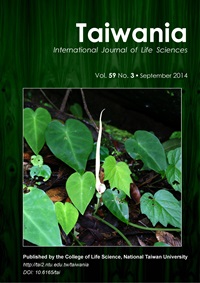Research Paper
Abiotic Factors and Yushania Influences on Abies Forest Composition in Taiwan
Cheng-Tao Lin, Tzu-Ying Chen, Chang-Fu Hsieh and Chyi-Rong Chiou
Published on: 15 September 2014
Page: 247 - 261
DOI: 10.6165/tai.2014.59.247
Abstract
Abies kawakamii forests are generally distributed above 3,000 m in Taiwanese high mountains. The community data used in our analysis were derived from the database of the National Vegetation Diversity Inventory and Mapping Project of Taiwan (NVDIMP), and environmental data were obtained from the WorldClim and NVDIMP databases. We used non-metric multidimensional scaling (NMDS) to identify vegetation composition of Abies communities and the structural equation models (SEMs) were used to examine the complex relationships between environmental factors and vegetation composition. The results of ordination showed the most important factors determining species composition of Abies forests involved habitat rockiness, heat load index, warmth index and summer and winter. SEM results approved the warmth index and winter precipitation were the main drivers determining the latent variable—climate, which significantly affect the overstory composition of Abies communities. The relative frequency of Yushania niitakayamensis also had a minor effect on the overstory. However, the relative frequency of Yushania had strong and significant effects on the understory flora and it was also strongly correlated with rock ratio and winter precipitation. Moreover, the overstory displayed a negative but insignificant coefficient on the understory composition, and this might be attributed to the fragile and high heterogeneous habitat in Taiwanese high mountain areas.
Keyword: Abies kawakamii, abiotic factor, vegetation composition, multivariate analysis, structural equation model (SEM), Yushania niitakayamensis.


